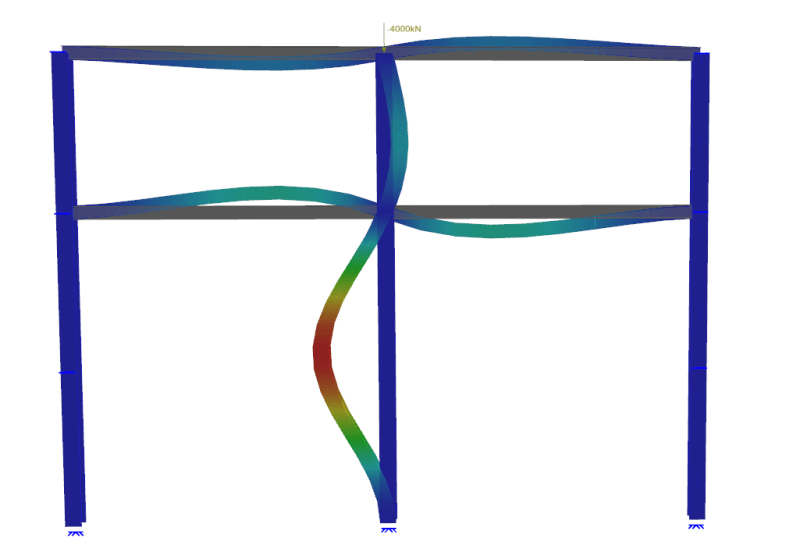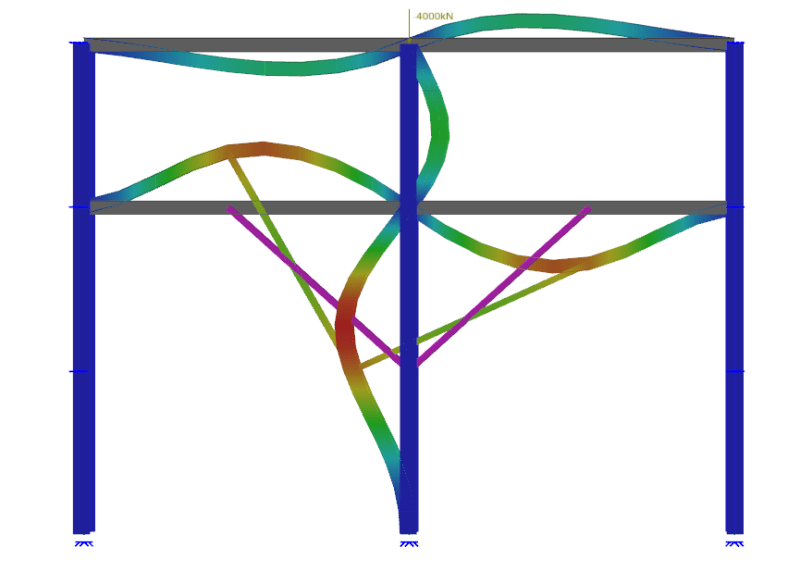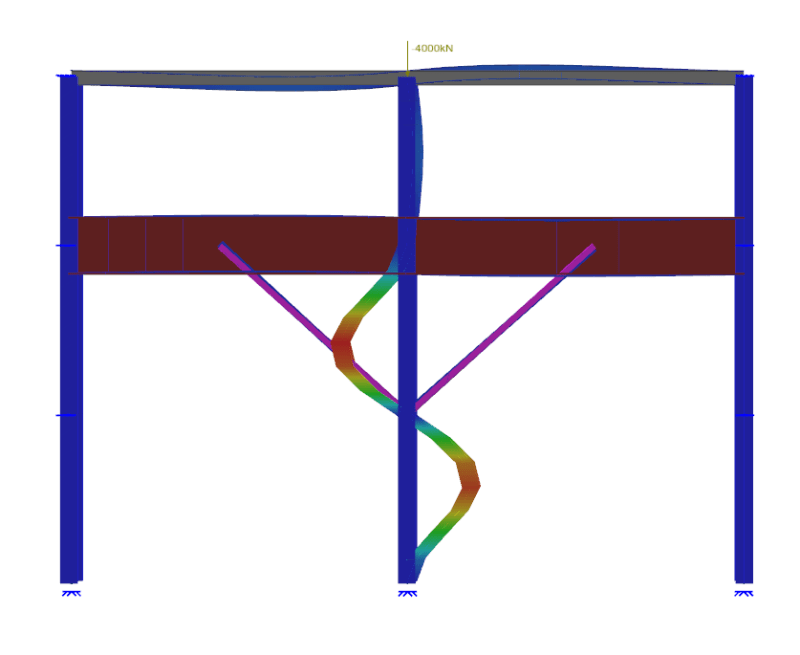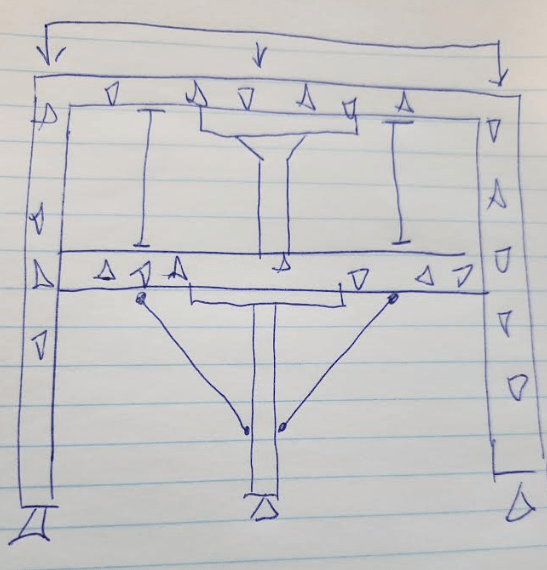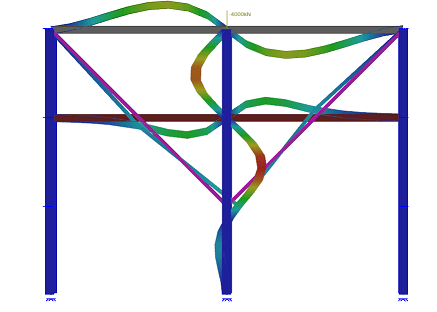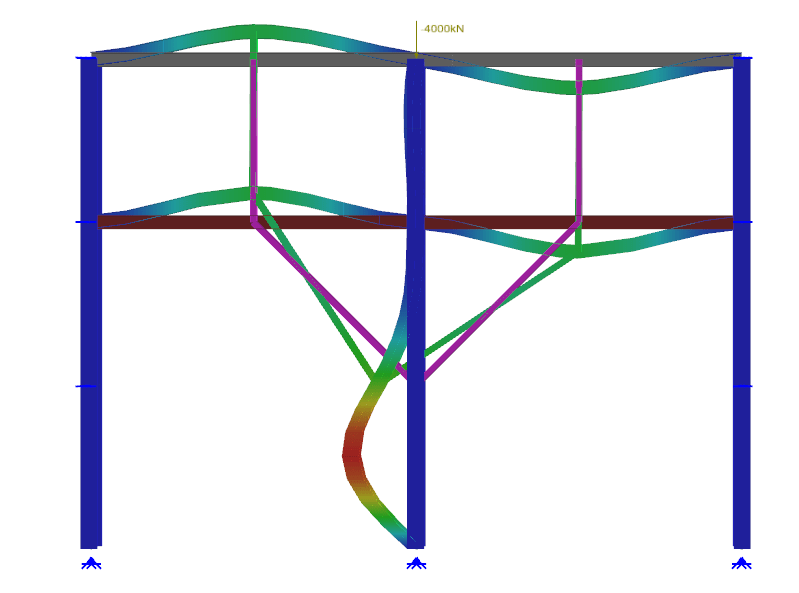I like computers. That help flesh out my thoughts without having to do the hard mathematics. Anyway. Here is the results.
THE UNMODIFIED CASE:
Column Height: 3m
Calculated effective length: 2.443
Calculated implied k factor: 0.8
Code implied effective length: 0.7-0.85 depending on assumptions (conservative)
FLOOR REMOVED NO BRACING
Column Height: 6m
Calculated effective length: 3.382
Calculated implied k factor: 0.56
Code implied effective length: 0.7-0.85 depending on assumptions (conservative)
FLOOR REMOVED BRACING MID HEIGHT
Column Height: 3m (If bracing is considered as lateral restraint)
Calculated effective length: 2.864
Calculated implied k factor: 0.95
Code implied effective length: 0.7-0.85 depending on assumptions ([highlight #F57900]UNCONSERVATIVE[/highlight]!)
[highlight #FCE94F]A
18% improvement in effective length when one might incorrectly assume a
100% improvement![/highlight]
FLOOR REMOVED BRACING MID HEIGHT BRACED TO EXTREMELY STIFF SLAB/BEAM ABOVE
Column Height: 3m (If bracing is considered as lateral restraint)
Calculated effective length: 2.084
Calculated implied k factor: 0.69
Code implied effective length: 0.7-0.85 depending on assumptions (Satisfactory, bracing performs as expected)

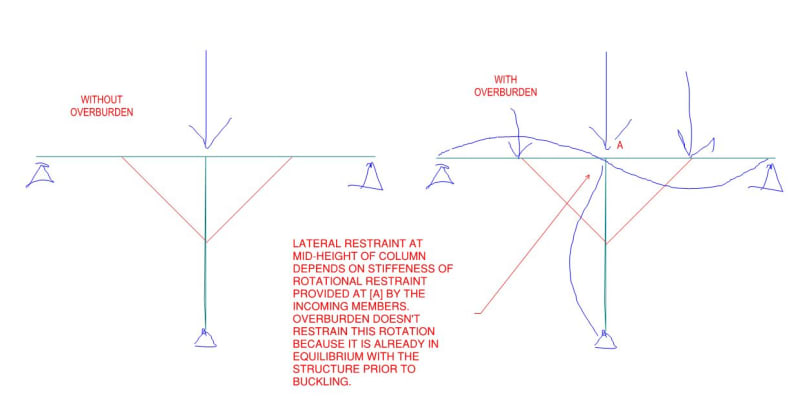

![[thumbsup] [thumbsup] [thumbsup]](/data/assets/smilies/thumbsup.gif) In fact I'm normally that person in other non engineering forums and probably end up with even more haters because enthusiastic and rational debate is often less accepted in non professional forums. Being an echo chamber wins more friends than taking contrarian views.
In fact I'm normally that person in other non engineering forums and probably end up with even more haters because enthusiastic and rational debate is often less accepted in non professional forums. Being an echo chamber wins more friends than taking contrarian views.
